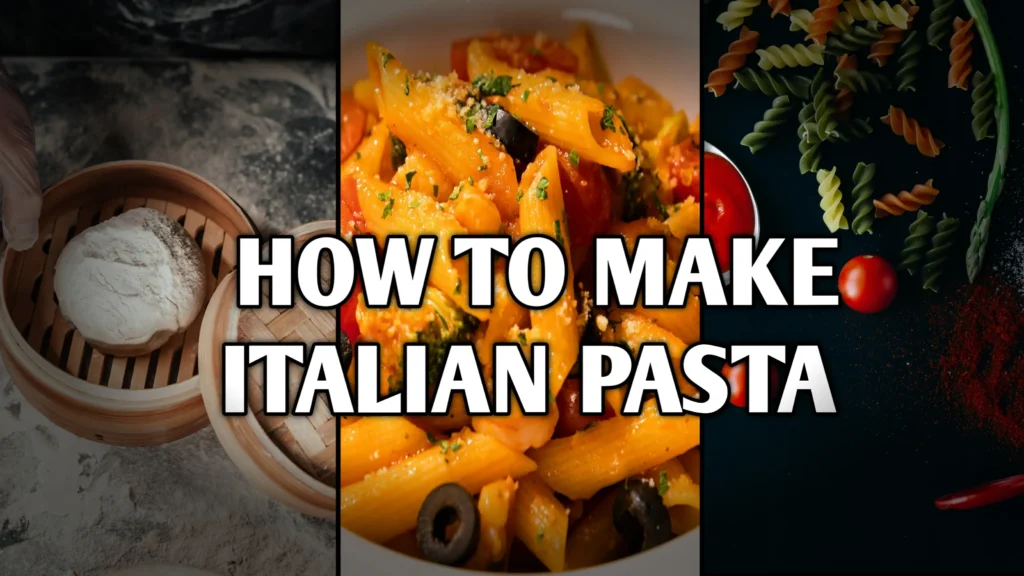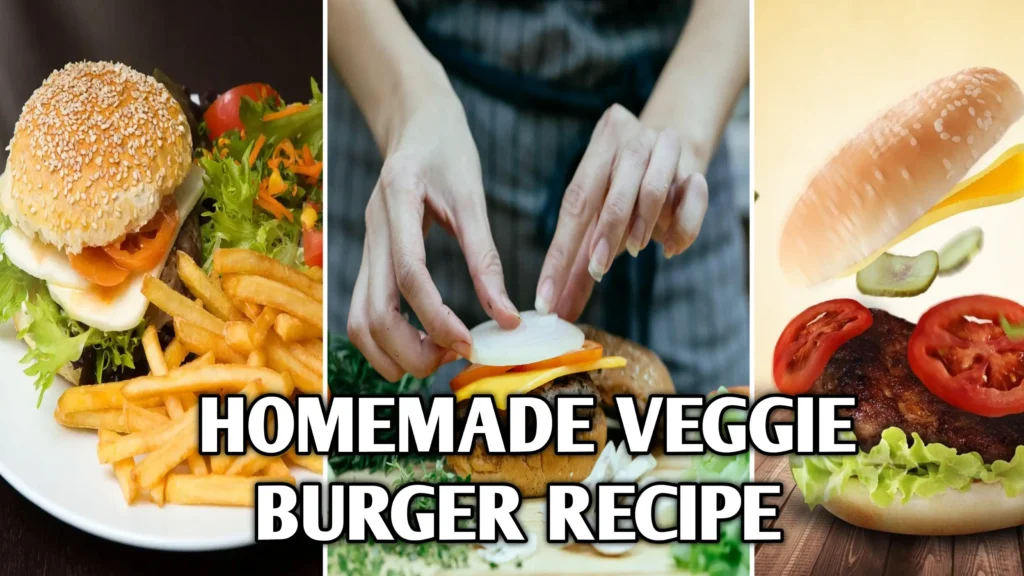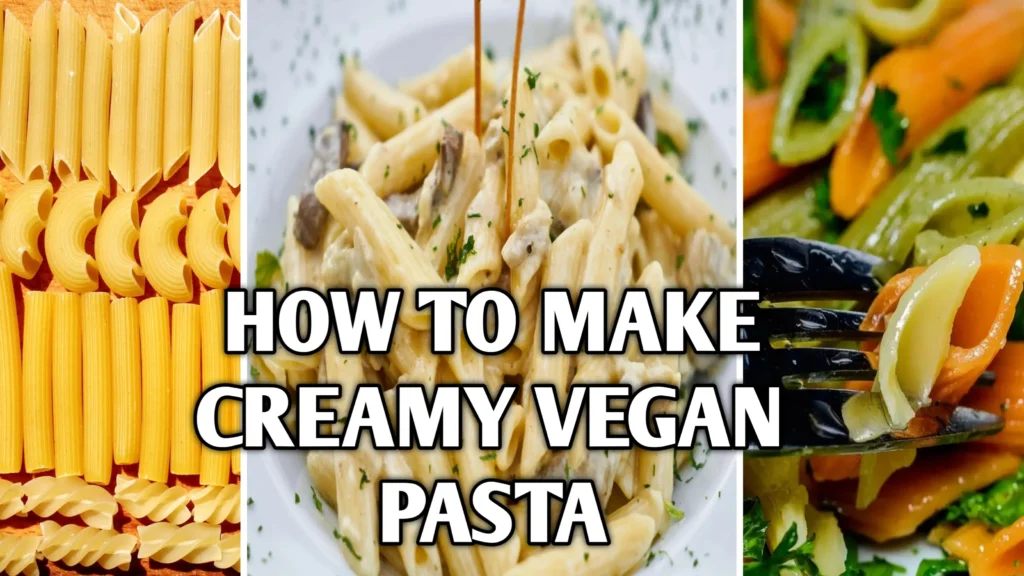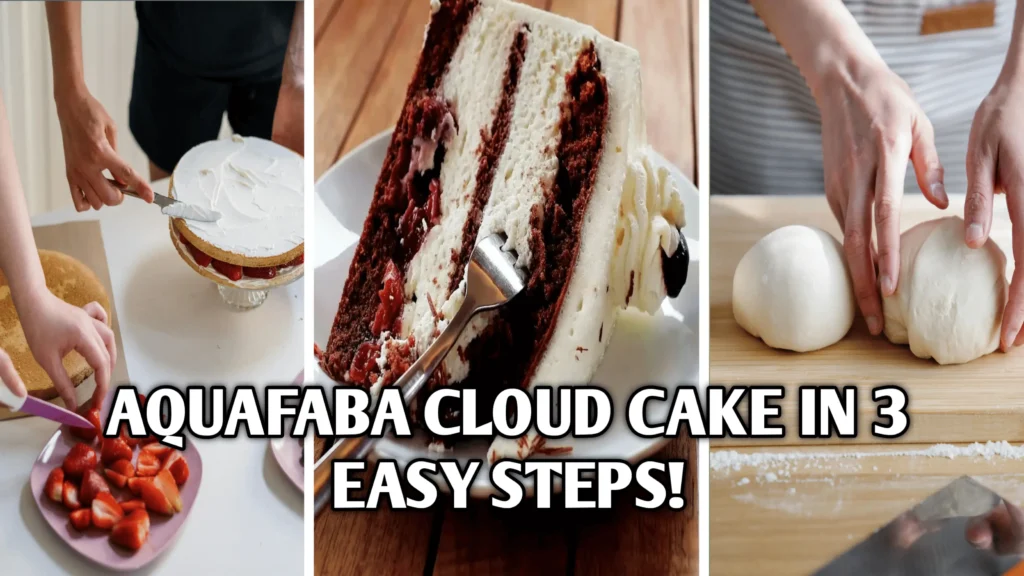
Introduction-
Have you ever scrolled through your feed and paused at the sight of a pillowy, ethereal slice of cake that almost seems too light to be real? Welcome to the world of the aquafaba dessert recipe, where the humble liquid from a can of chickpeas transforms into a cloud-like confection that’s entirely egg-free, dairy-free, and 100% plant‑based. In this guide, you’ll learn how to create your own dreamy eggless cloud cake recipe in just three straightforward steps—no technical jargon, no obscure ingredients, and absolutely no animal products.
Whether you’re a seasoned vegan baker or someone simply curious about the science behind fluffy, eggless meringues, you’ll find every nugget of wisdom you need right here. Ready to get whisking? Let’s dive in!
1.The History and Rise of the Aquafaba Dessert Recipe
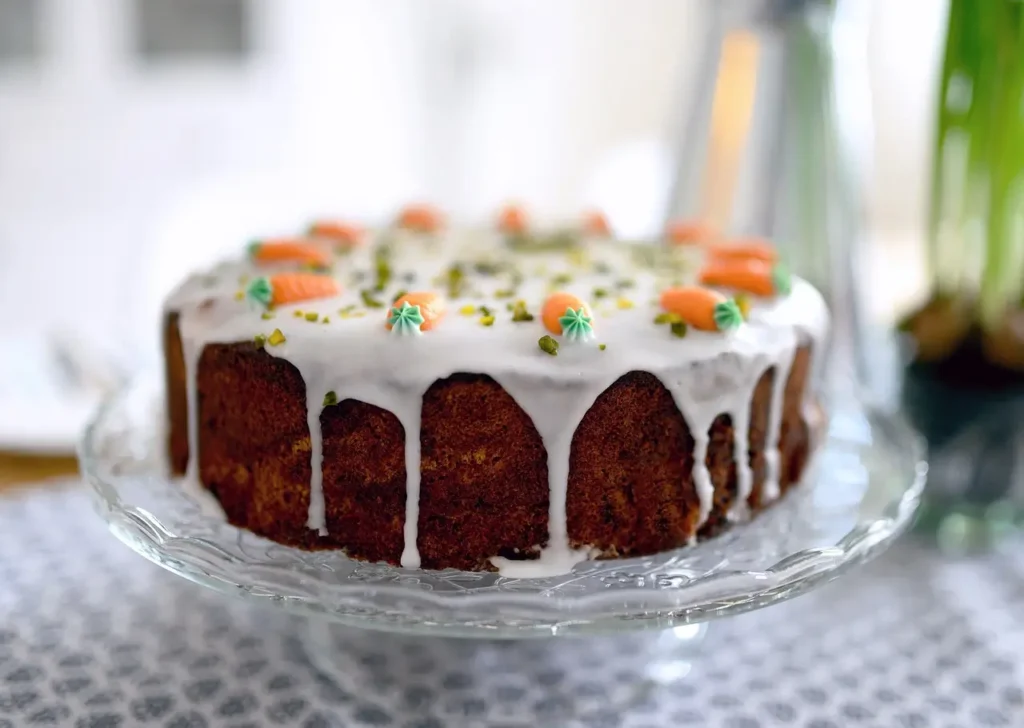
Long before social media trends swept the globe, home cooks occasionally marveled at the unexpected foaming power of bean‑cooking liquid. Yet it wasn’t until 2015 that developer Goose Wohlt coined “aquafaba,” sparking thousands of experiments and a groundswell of plant‑based innovation. Within a year, what began on online vegan forums evolved into a culinary revolution, with recipe developers sharing their aquafaba cake recipe successes across blogs and YouTube channels.
This grassroots movement coincided with growing awareness of food waste and the demand for allergen‑free foods. Suddenly, that humble can of chickpeas held untapped potential. Home bakers discovered that the aquafaba dessert recipe wasn’t a gimmick but a deeply versatile technique, opening doors to eggless meringues, macarons, mousses, and, of course, the ethereal eggless cloud cake recipe at the heart of this guide.
Why It Matters: The rapid adoption of aquafaba highlights a shift toward resourceful, sustainable cooking—transforming byproducts into gourmet delights and challenging preconceived notions of vegan baking.
2.What Is Aquafaba and Why It Works Wonders in an Aquafaba Cake Recipe
When you open a can of chickpeas, you might instinctively discard the brine, never guessing it holds the secret to your next baking triumph. That brine is aquafaba—a term coined from the Latin words for water (“aqua”) and bean (“faba”). This unassuming liquid is a masterful substitute for egg whites, capable of creating stable foams, glossy meringues, and yes, an impossibly light aquafaba dessert recipe that rivals any traditional cloud cake.
Aquafaba’s magical properties stem from its composition: proteins, starches, and soluble plant solids released from chickpeas during cooking. These components mimic the functionality of egg proteins, allowing you to whip aquafaba into stiff peaks that hold their shape and trap air, offering structure and lift to your baked creations. Not only does this make it a star in vegan and allergy‑friendly kitchens, but it also opens up a world of aquafaba baking tips for anyone seeking to reduce waste and upcycle pantry staples.
3.Why an Aquafaba Dessert Recipe Should Be Your Next Baking Adventure
In recent years, the demand for plant‑based desserts has skyrocketed. Yet, many perceive vegan baking as overly complicated or reliant on niche products. The aquafaba dessert recipe shatters that misconception by leveraging an ingredient you already have on hand. Here’s why it’s become the go‑to trick for home bakers and pros alike:
- Accessibility: No specialty stores needed—just chickpeas and sugar.
- Allergen-Friendly: Completely free from eggs, dairy, and nuts (unless you choose to add them).
- Sustainability: Upcycles a byproduct often discarded, reducing waste.
- Performance: Delivers a texture and rise on par with egg-based cakes.
Embrace the trend with confidence, knowing your aquafaba cake recipe is backed by both science and a surge of enthusiastic bakers worldwide.
4.Step-by-Step Guide to Making Your First Eggless Cloud Cake Recipe
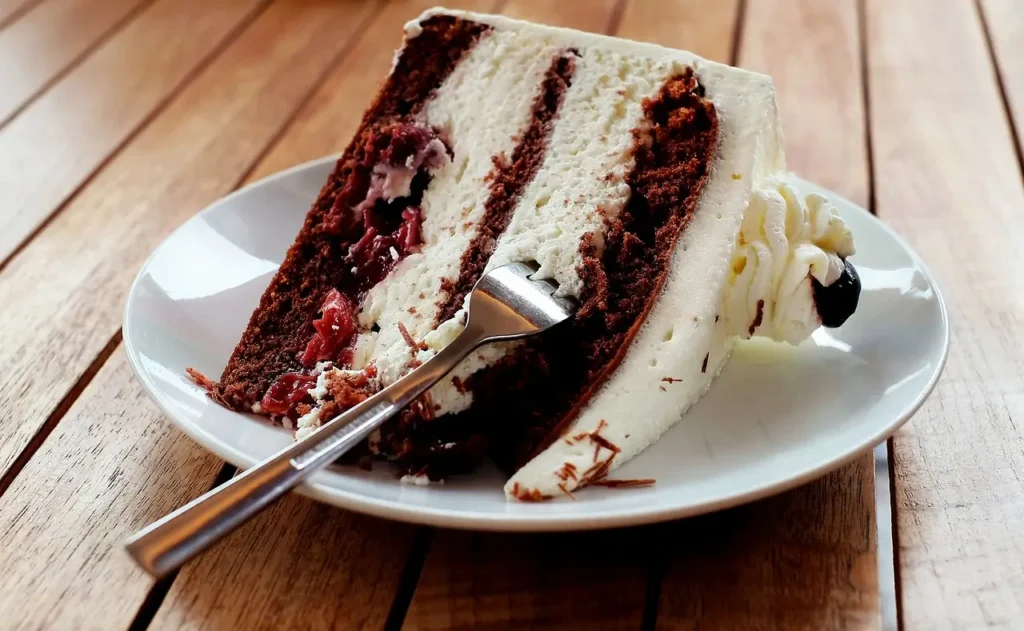
Below, we break down the entire process into Three Easy Steps. Each stage includes pro-level pointers so you can nail that classic cloud‑like crumb every single time.
Step 1 – Preparing the Aquafaba 🥣
Begin by draining one 15-ounce can of chickpeas, reserving aquafaba in a clean bowl. Gently pat the chickpeas dry for other recipes; you won’t need them here. Let the aquafaba rest at room temperature for about 10 minutes to allow any bubbles to dissipate. This ensures a smooth whipping process without unwanted air pockets.
Quick Tip: For extra stability, chill the aquafaba in the fridge for 30 minutes before whipping. Cold aquafaba whips more quickly and achieves higher peaks.
Step 2 – Whipping to Stiff Peaks 💪
Transfer your chilled aquafaba to the bowl of a stand mixer fitted with the whisk attachment (or use a hand mixer). Begin whipping on medium speed until frothy, about 2 minutes. Slowly add ½ cup of superfine sugar, one tablespoon at a time, to encourage glossy, stable peaks. Increase speed to high and whip until the mixture forms firm peaks that hold shape when you lift the whisk—this can take 8–10 minutes.
aquafaba dessert recipe must be whipped properly—undermixed whites will collapse, while overwhipped aquafaba can become grainy. Watch for glossy, firm peaks!
Step 3 – Baking and Assembling Your Cloud Cake 🎂
- Folding Dry Ingredients: Sift together 1 cup of cake flour, ¼ teaspoon of cream of tartar, and a pinch of salt. Gently fold this into your whipped aquafaba in three increments, using a rubber spatula and cutting motion to preserve airiness.
- Baking: Preheat your oven to 325°F (160°C). Pour batter into a 9-inch round cake pan lined with parchment. Bake for 25–30 minutes, or until the top springs back lightly to touch.
- Cooling & Assembly: Let the cake cool completely upside-down on a wire rack (this prevents deflation). Once cool, gently loosen edges and invert onto a serving plate. Decorate with fresh berries, a dusting of powdered sugar, or vegan whipped cream infused with vanilla.
By following these three steps, you’ll master a featherlight aquafaba cake recipe that wows at every slice—and all without any animal ingredients.
5.Expert Aquafaba Baking Tips for Cloud Cake Success 🌱
Navigating the nuances of an eggless cloud cake recipe can be tricky, but these expert aquafaba baking tips will ensure consistent, bakery‑quality results every time:
Key Takeaways:
- Always use good‑quality, BPA‑free canned chickpeas.
- Chill aquafaba for increased whipping efficiency.
- Gradually incorporate sugar to stabilize the foam.
- Handle the whipped mixture gently—no stirring or beating!
- Cool cake upside‑down to preserve loft.
Each of these pointers will fortify your confidence and maximize your baking prowess.
6.Creative Variations and Flavor Add‑Ons 🌸
The beauty of an aquafaba dessert recipe is its adaptability. Once you’ve mastered the classic version, experiment with:
- Citrus Zest: Fold in lemon or orange zest for a bright, aromatic twist.
- Matcha Swirl: Add 1 teaspoon of high-grade matcha powder to the dry ingredients for an earthy green hue.
- Chocolate Clouds: Gently fold 2 tablespoons of unsweetened cocoa powder into the flour mix for a mocha‑kissed cake.
- Berry Compote Layers: Sandwich thin layers of berry compote between cake tiers for a tantalizing tart-sweet surprise.
Each variation elevates your aquafaba cake recipe into a bespoke creation that suits any season or celebration.
🎂 Explore Unique Cake Flavor Combinations
Looking to bake something bold and unforgettable? Discover creative and delicious cake flavor pairings that will impress any crowd — from classic combos to gourmet twists!
🍰 View Flavor Combinations7.The Science Behind Aquafaba’s Foam Stability
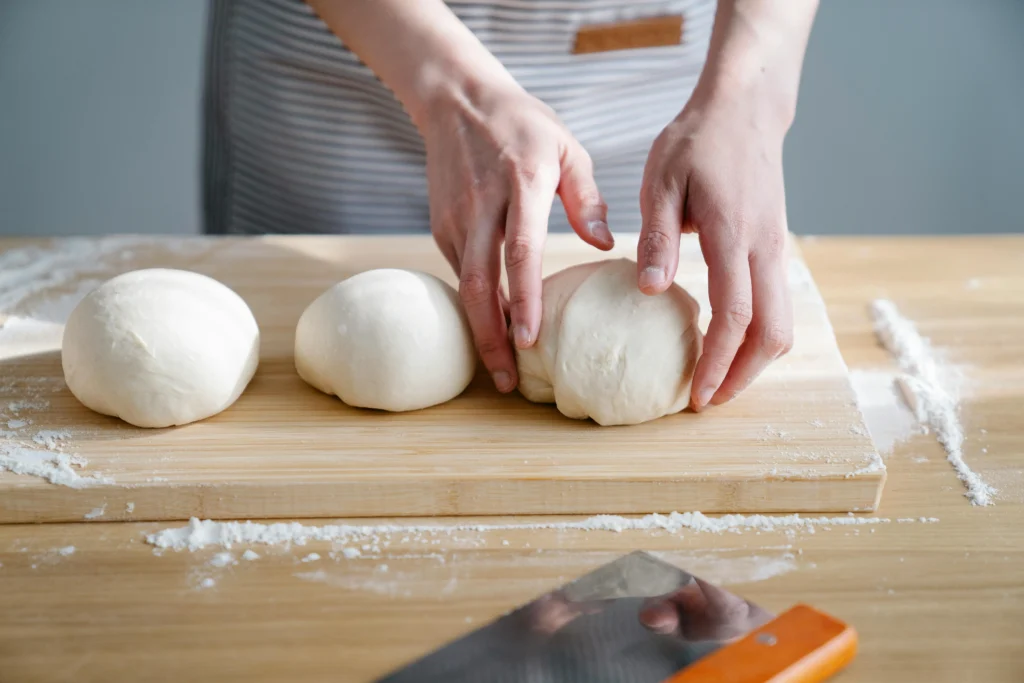
A.Proteins, Saponins & Starches—A Delicate Balance
To truly master an aquafaba dessert recipe, you need to appreciate the interplay of its molecular components:
- Proteins: Though fewer than in egg whites, chickpea‑derived proteins unfold under mechanical stress, trapping air.
- Saponins: Natural soap‑like compounds that reduce surface tension, helping foam formation.
- Starches: Contribute viscosity, lending body and preventing collapse.
When you whisk aquafaba, these elements synergize: proteins and saponins create a resilient membrane around air bubbles, while starch granules reinforce the network, resulting in a stable foam capable of supporting a cake’s weight.
Key Takeaway: For an impeccable aquafaba baking tips routine, remember that protein concentration varies by brand—opt for brands with clearer brine for stronger foams.
8.Nutritional Profile and Health Benefits of the Aquafaba Dessert Recipe
While many seek the aquafaba dessert recipe for its vegan credentials, understanding its nutritional aspects can inform healthier baking choices:
| Component | Amount per 3 tbsp (45 g) | Notes |
|---|---|---|
| Calories | ~10 kcal | Negligible compared to sugar and flour. |
| Protein | 0.5 g | Contributes to foam structure. |
| Carbohydrates | 1.5 g | Mostly from soluble starches. |
| Fat | 0 g | Completely fat‑free. |
| Sodium | 200–400 mg | Rises with added salt—rinsing reduces sodium. |
Although aquafaba itself is low‑calorie, the overall aquafaba cake recipe typically relies on sugar and flour for bulk. For a balanced treat, consider substituting part of the sugar with coconut sugar or adding pureed fruit to reduce refined sugar content while enhancing moisture and flavor.
9.Advanced Techniques for the Perfect Aquafaba Cake Recipe
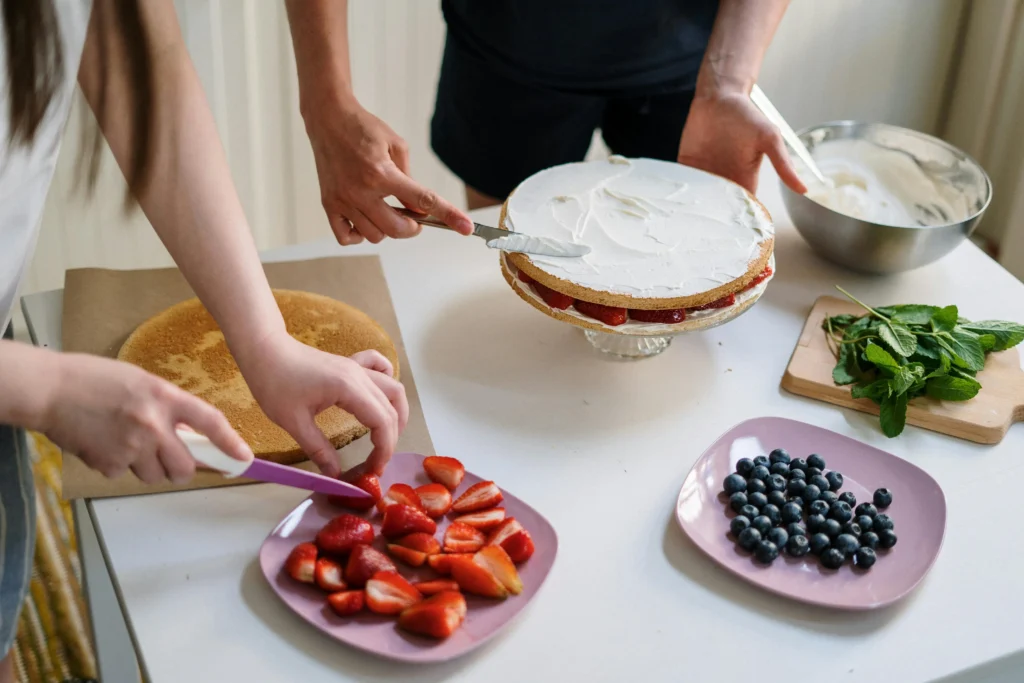
1.Temperature Control and Equipment
Experienced bakers know that the tiniest variables can make or break an eggless cloud cake recipe. Here’s how to optimize your setup:
- Bowl Material: Metal or glass bowls remain free of grease better than plastic.
- Ambient Temperature: Aim for a cool kitchen (65–70°F / 18–21°C). Humidity over 60% can slow whipping.
- Sugar Selection: Superfine or caster sugar dissolves quickly, preventing gritty peaks.
2.Layering and Structuring Multi‑Tier Cakes
Once you’ve mastered a single-layer aquafaba dessert recipe, challenge yourself with tiered creations:
- Chill Between Layers: After baking each layer, wrap in plastic and refrigerate to firm up before stacking.
- Stabilize with Ganache: Use a vegan chocolate ganache ring as a dam to hold on fillings like fruit curd or whipped coconut cream.
- Dowels & Boards: For cakes over two tiers, insert food‑safe dowels and place each tier on a thin cake board for stability.
These pro‑level steps ensure your cloud cake doesn’t sag under its own weight.
10.Troubleshooting Your Eggless Cloud Cake Recipe
Even the most careful bakers hit a snag now and then. Here’s how to address common hiccups:
- Flat Peaks: Ensure no residual grease in your bowl or on your whisk—clean with hot, soapy water.
- Dense Texture: Don’t overfold flour; stop mixing as soon as no streaks remain.
- Cracked Surface: Check that your oven temperature is accurate—an oven thermometer can help.
- Collapsing Cake: Cool upside‑down immediately after baking to lock in structure.
Armed with these fixes, every slice will be pristine, pillowy perfection.
🍕 Make the Perfect Thin Crust Pizza at Home in 30 Minutes
Craving crispy, homemade thin crust pizza? Learn how to make it from scratch — including a simple, flavorful tomato sauce — in just half an hour. Ideal for quick dinners or weekend treats!
🍽️ Try This Thin Crust Pizza Recipe🍅 Also check out more Homemade Recipes for tasty vegetarian meals and inspiration.
FAQs
2. Can I store leftover aquafaba, and for how long?
Yes! Store aquafaba in a sealed jar in the refrigerator for up to one week. You can also freeze it in ice cube trays for up to three months—perfect for spontaneous baking sessions.
3. Is there a gluten‑free version of this aquafaba cake recipe?
Absolutely. Simply swap the cake flour for a 1:1 gluten‑free baking blend. Be mindful to use a blend that contains xanthan gum or add ½ teaspoon yourself to ensure structure.
4. Can I substitute other bean brines for aquafaba?
While chickpea brine is most reliable due to its protein content, brines from white beans or lentils can sometimes work, though whipping performance may vary.
5. How can I make my aquafaba cake extra moist?
Gently brush each cake layer with a simple syrup (equal parts sugar and water heated until sugar dissolves) before assembling. This adds moisture without weighing down the cloud‑light crumb.
6. How do I prevent my aquafaba peaks from weeping liquid?
Ensure full dissolution of sugar—gritty sugar can leach moisture. Whip just until firm peaks form; overwhipping breaks down proteins, releasing liquid.
7. Can I use dried chickpea cooking water instead of canned brine?
Yes—soak and cook dried chickpeas, reserving the cooking water. Strain for clarity, then refrigerate overnight to let solids settle; decant the clear aquafaba for best performance.
8. What’s the best way to color my aquafaba cake naturally?
Use powdered freeze‑dried fruit (e.g., raspberry powder), matcha, or turmeric. Add during the dry‑ingredient stage so color integrates evenly.
9. My cake edges stuck to the pan—how can I avoid this?
Line the pan with a full‑coverage parchment circle and use strips up the sides. Lightly oil or vegan‑spray the parchment, not the pan itself.
10. Is it possible to make mini cloud cakes or cupcakes with aquafaba?
Absolutely. Reduce baking time to 12–15 minutes at 325°F (160°C). Watch closely—mini cakes finish faster and can dry out if overbaked.
Conclusion:
From pantry staple to show‑stopping centerpiece, the aquafaba dessert recipe is a testament to vegan innovation and baking ingenuity. As you perfect your eggless cloud cake recipe, remember that practice and patience are your allies. Share your creations on social media with #CloudCakeMagic, and don’t forget to tag fellow baking enthusiasts.
🤗Happy baking—and may your cakes always rise to the occasion!😍

